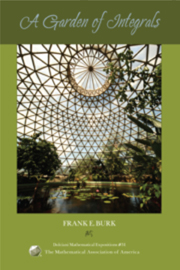Book contents
- Frontmatter
- Foreword
- Contents
- 1 An Historical Overview
- 2 The Cauchy Integral
- 3 The Riemann Integral
- 4 The Riemann–Stieltjes Integral
- 5 Lebesgue Measure
- 6 The Lebesgue Integral
- 7 The Lebesgue–Stieltjes Integral
- 8 The Henstock–Kurzweil Integral
- 9 The Wiener Integral
- 10 The Feynman Integral
- Series List
- Index
- About the Author
9 - The Wiener Integral
- Frontmatter
- Foreword
- Contents
- 1 An Historical Overview
- 2 The Cauchy Integral
- 3 The Riemann Integral
- 4 The Riemann–Stieltjes Integral
- 5 Lebesgue Measure
- 6 The Lebesgue Integral
- 7 The Lebesgue–Stieltjes Integral
- 8 The Henstock–Kurzweil Integral
- 9 The Wiener Integral
- 10 The Feynman Integral
- Series List
- Index
- About the Author
Summary
What science can there be more noble, more excellent, more useful for men, more admirably high and demonstrative than this of mathematics?
—Benjamin FranklinIn the preceding chapters, the integrals under discussion were defined on sets of real numbers. So the domains of integration have consisted of real numbers. In contrast, the Wiener integral has as its domain of integration the space of continuous functions on the interval [0, 1] that begin at the origin. A continuous function now plays the role of a real number.
With the Wiener integral path replaces point: these are integrals over sets of continuous functions, integrals over “paths.” Hence the terminology path integral. The approach, as in the development of the Lebesgue integral, is threefold:
We begin by defining a measure on special subsets of our space of continuous functions.
We extend this measure to an appropriate sigma algebra.
With a measure in place, we develop an integration process leading to the Wiener integral.
Brownian Motion
The story begins in Scotland in the 1820s with a botanist named Robert Brown (discoverer of nuclei of plant cells) who was studying the erratic motion of organic and inorganic particles (pollen and ground silica, respectively) suspended in liquid. Neighboring particles experienced unrelated motion, movement was equally likely in any direction, and past motion had no bearing on future motion.
- Type
- Chapter
- Information
- A Garden of Integrals , pp. 205 - 234Publisher: Mathematical Association of AmericaPrint publication year: 2007



